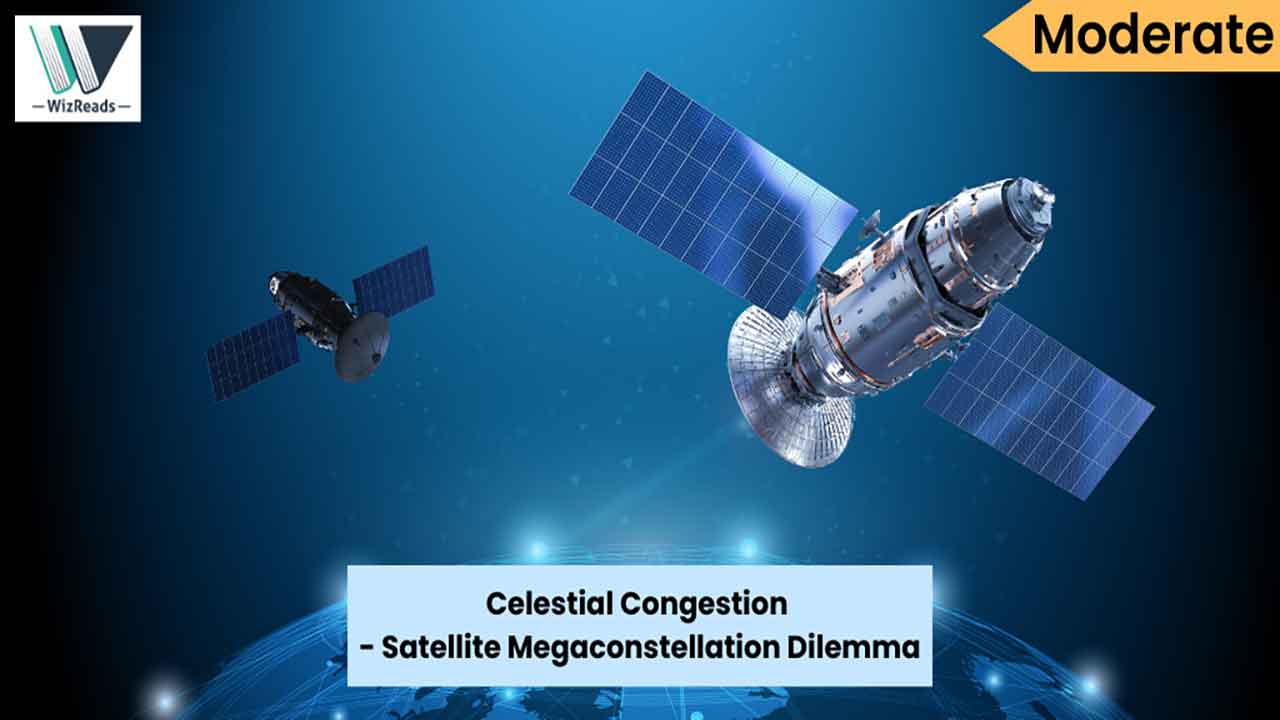
Newsletter Subscribe
Enter your email address below and subscribe to our newsletter

Enter your email address below and subscribe to our newsletter

What happens when the internet revolution in space collides with humanity’s oldest science? Astronomers are deploying ingenious shields and algorithms in a desperate bid to preserve our window to the stars.
Read the passage(s) and answer the question(s) that follows. You can choose the GMAT style Reading Passage and the question or the GRE RC practice variant. Even better, you could try both.
The proliferation of satellite megaconstellations threatens ground-based astronomy in unprecedented ways. Companies like SpaceX, OneWeb, and Amazon plan to deploy tens of thousands of satellites in low Earth orbit to provide global internet coverage—vastly exceeding the approximately 3,300 active satellites currently in orbit. These satellites reflect sunlight, creating streaks across astronomical images that contaminate scientific data. Researchers modeling the impact found wide-field telescopes could lose up to 50% of twilight observations to satellite interference, while even narrow-field instruments and spectrographs—devices that separate light into colors—experience significant data corruption. The contamination varies with observation time, satellite altitude, and instrument type, with observations during the first and last hours of night suffering the most extensive disruption.
Several mitigation strategies have emerged, though none offers a complete solution. Satellite manufacturers can reduce visible surface area and implement darkening measures, like SpaceX’s VisorSat program. Astronomers can schedule observations around known satellite trajectories, though this requires substantial coordination as orbits frequently change. Post-processing techniques to remove satellite trails work for some imaging applications but remain ineffective for spectroscopic data where contamination is difficult to identify. Ultimately, ongoing dialogue between satellite operators and the astronomical community remains essential to balance technological advancement with scientific preservation.
A) To provide an example of how satellite manufacturers are attempting to reduce light pollution through technological modifications
B) To criticize SpaceX’s ineffective approach to addressing astronomical concerns
C) To demonstrate that post-processing techniques are superior to hardware-based solutions
D) To argue that the astronomical community has exaggerated the impact of satellite constellations
E) To illustrate how dialogue between satellite operators and astronomers has already resolved the most significant problems
The passage mentions the VisorSat program specifically as an example of a mitigation strategy where “Satellite manufacturers can reduce visible surface area and implement darkening measures, like SpaceX’s VisorSat program.” This clearly positions it as an example of how manufacturers are attempting to address the light pollution issue through technological modifications to their satellites.
Correct Answer: Choice (A)

Astronomers battling satellite megaconstellations—vast networks of thousands of satellites in low Earth orbit providing global internet—have implemented nascent but imperfect countermeasures. The hardware-oriented approach, exemplified by SpaceX’s VisorSat program, employs deployable shields that block sunlight from reaching reflective surfaces, particularly the photovoltaic arrays that would otherwise act as orbital mirrors. Photometric assessments show these modified satellites appear 50% dimmer, though this reduction falls short of astronomy’s desired threshold. Complementing hardware solutions, sophisticated processing algorithms represent a secondary defense by statistically identifying and removing satellite trails from astronomical images. However, these computational techniques struggle with spectroscopic data where contamination remains difficult to distinguish from genuine astronomical signals, leaving certain research domains vulnerable despite technological advances and highlighting the limitations of current mitigation strategies.
A) SpaceX’s VisorSat program offers the most viable solution to satellite interference with astronomy.
B) Computational methods for removing satellite trails are fundamentally inadequate for modern astronomy.
C) Current approaches to mitigating satellite interference show promise but contain significant limitations.
D) Commercial satellite interests will inevitably outweigh scientific research priorities.
E) Astronomers have developed solutions that will neutralize satellite threats within a decade.
The passage primarily discusses two approaches to mitigating satellite megaconstellation interference (hardware modifications and computational algorithms), acknowledging their promise while emphasizing their significant limitations.
Correct Answer: Choice (C)